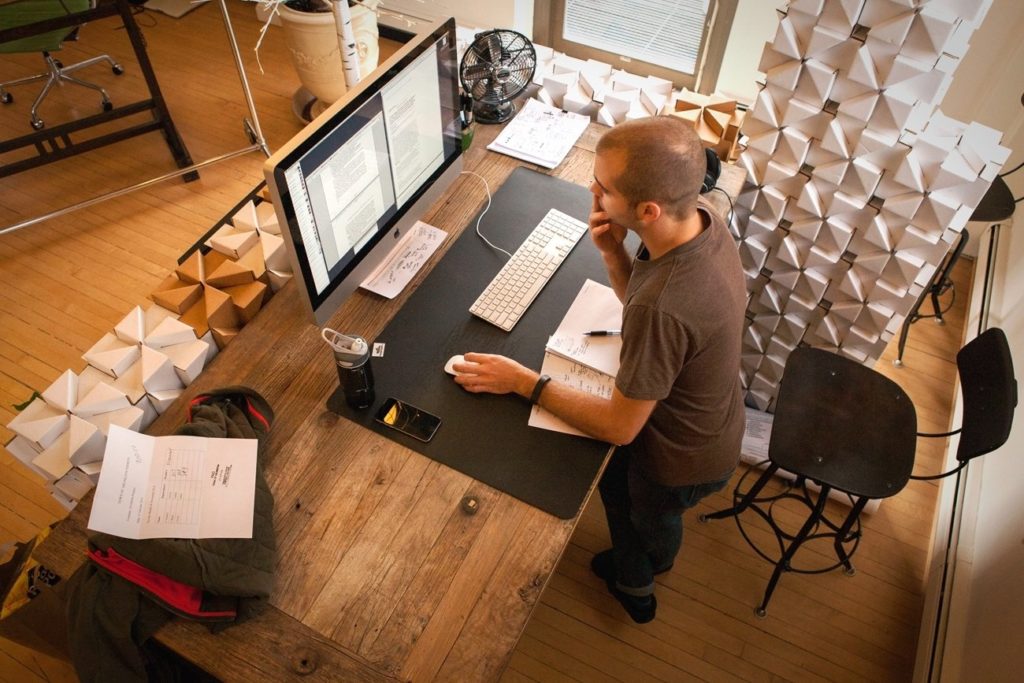More and more, we are seeing standing desks popping up in traditional workplaces. In a 2017 survey by the Society for Human Resource Management, standing desks were the fastest growing benefits trend. This is likely a result of the new phrase that’s undeniably catchy, “sitting is the new smoking”. While this phrase is definitely extreme, there is a great deal of evidence that says that sitting for long periods of time can have adverse effects on your health.
The large majority of what is written about standing desks is positive; however, there are arguments about why someone should not use a standing desk. The truth is, they’re not for everyone. Below are some of the pros and cons of using a standing desk. It’s up to you to decide whether it’s the right thing for you.
Pros:
Fighting off Obesity
Those that have a moderate level of activity throughout the day are less likely to gain weight. While working at a standing desk, it is that much easier to walk around and move. When you don’t need to stand up, individuals the work at standing desks usually perform more of this moderate activity during the workday. In addition, less calories are burned while sitting than are burned while standing, according to a 2013 study (on average, 50 more calories per hour!)
Improve Mental Health
Evidence reveals that working at a standing desk can improve your mental health, in addition to your physical health. “In one 7-week study, participants using standing desks reported less stress and fatigue than those who remained seated the entire work day.” Past your decision about working at a standing or sitting desk, standing can help to improve one’s overall mood.
Reduced Risk of Cancer, Cardiovascular Disease, Type 2 Diabetes, and Lower Long-Term Mortality Risk
These all go hand in hand. With a reduced risk of cancer, cardiovascular disease, and type 2 diabetes, many studies have found that those who sit more often are more susceptible to any early death. While breast and colon cancer appear to be the types of cancer more strongly associated, the sedentary lifestyle does not seem to discriminate. While the many studies that link all of these diseases do not present cause and effect, there are strong indications that reduced sitting time may lower your risk of dying early.

Cons:
Distraction
Many people cannot focus to their full potential while standing. Cho, the 31-year-old founder and CEO of Unsplash, complained that “It’s really hard to [work] when you’re thinking about the pain in your leg, when you’re trying to force yourself to stand, when your shoulders are starting to cave in,” he says, when, “what you really want to do is focus on the next paragraph that you’re writing.” The fact is, our brains perform better on some tasks sitting down.
Users Fell they Need to Stand all Day
After buying or being given a standing desk, users often feel like they need to stand the entire day. This can be just as detrimental to your health as sitting all day. Standing too much often compresses the spine and can lead to lower back problems, among other things.
Price
Standing desks or even standing desk platforms are far from cheap. Most come in around $300-$600+. Many models require customization as well, adding on additional costs.
Many of our members here at SnapSuites have switched to standing desks, and others have decided it isn’t for them. If you are interested in standing desks, luckily there are a growing number of options on the market that won’t clash with your office decor.